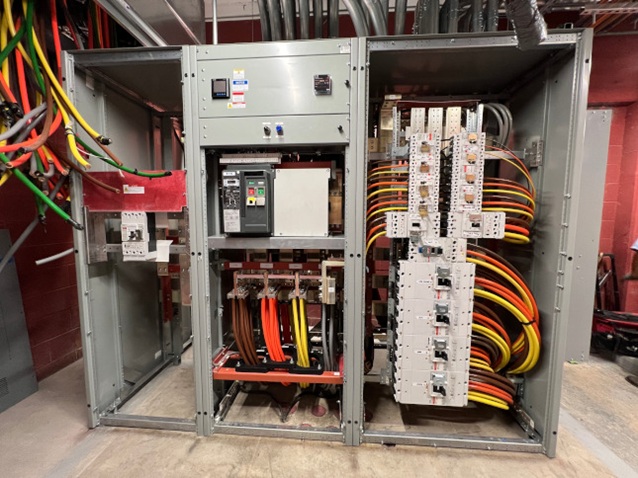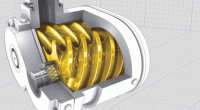Electric Infrastructure Safety: The Importance of Code Compliant Cables
Ask any sparkie or general contractor what their biggest workplace concern is, and they’ll probably say it’s the risk of coming in contact with faulty or defective electrical cabling. That’s partially because Australia’s nationwide standards for nominal 230V cabling and voltage standards weren’t officially codified until 2000. It’s also because Australia’s extreme climate, and even persistently hungry critters, can all reduce an otherwise serviceable electric cable to a potentially life-threatening hazard.
The key to minimising the risks from faulty or aging cabling is by being proactive. Periodic cable inspections, especially during periods of extremely hot weather, is the most practical way to verify cable integrity. And anytime a defective or potentially defective cable is discovered, immediate action should be taken to replace it before the hazard evolves.
Keep Electric Infrastructure Safe With Code Compliant Cables

Let’s be honest: while it’s easy to dismiss flickering lights, oddly warm power points, or the occasional circuit breaker trip as intermittent events, the fact is they could all be signs of a much larger cabling problem. Cables and wires simply aren’t designed to last forever, this is true for households as much as for industrial facility use, which is why new, code compliant electrical cables need to be on every property owner’s priority list.
With the upper limits of cable lifespans residing only around 50 years even under perfect conditions, any indication that a cable or electrical installation could be failing needs to be treated seriously. This is especially true, however, as growing average temperatures can be expected to take an even higher toll on the country’s pre-code installations, exacerbating a range of problems that can include:
- Mechanical stresses and code inconsistencies. Over the decades, Australia’s nominal voltage standards have varied between 220V – 240V at both 40Hz and 50Hz, resulting in a trail of out-of-code wiring stresses and colour coding inconsistencies almost anywhere that can be dangerously out of spec, unsuitable for modern installations, and ultimately prone to dangerous overheating.
- Extreme sheath deterioration. The combinations of lead, Vulcanised Indian Rubber (VIR), and Tough Rubber Sheathed (TRS) jackets that were widely used in residential and commercial cabling over the last century are subject to both toxic and hazardous deterioration, and rightfully need to be replaced by code-compliant power cables with long life polymer sheathing.
- Insulation, and conductor core deterioration. Sheath deterioration on outdated cables can lead to the disintegration of its crucial interior insulation, leaving wire conductors exposed to galvanic corrosion, increased line resistance and the possibility of fatal electric shock.
Make no mistake: the hazards of either relying on or coming into contact with non-standard colour coded wiring or unreliable sheathed and insulated conductors are too numerous to ignore. That’s why anyone who routinely works with electrical wiring, or is the proprietor of a property that’s still outfitted with pre-1980 wiring needs to think about updating their electrical power cable infrastructure with safe, new AS/NZS 3000 and 5000 compliant cables.
New Cable Colour Coding Eliminates Unnecessary Electrical Hazards
Colour coding is the most prominent safety feature of electrical cabling. That’s because colour codes provide an instant, universally recognisable way to instantly distinguish between various types of electrical power cables in an emergency. It wasn’t until 2018, however, that Australia’s electrical cable colour coding standards were finally harmonised with the guidance outlined in AS/NZS 3000’s wiring rules. This is where correctly coded single- and three-phase cables sourced from manufacturers like Electra, Prysmian, and Madison really shines through.
The standardisation of Australia’s current colour coding is as essential for efficiency as it is for safety and compliance. That’s because new cables are committed to eliminating the ambiguity that has become the bane of with working with outdated, pre-code scheme electrical wires and cables.
PRE-CODE COLOUR SCHEME
- Brown – Phase 1
- Black – Neutral
- Green, or green and yellow – Earth
CURRENT COLOUR COMPLIANCE STANDARD
- Brown – Phase 1
- Black – Phase 2
- Grey – Phase 3
- Blue – Neutral
- Green and yellow – Earth
Although there’s no shortage of compatibility problems that can still arise due to improvised and inconsistent wiring, with properly colour coded single- and multi-core power cables, Australia is able to simplify the process of migrating away from outdated cabling. And the same urgency for migration also applies to brittle or deteriorating cable sheathing, where the danger from exposed live conductors can rapidly lead to electrical fires, or even electrocution.
Code Compliant Cable Sheaths and Jackets That Are Engineered to Last
While colour coding is the most recognisable aspect of electric cable design, sheathing is arguably its most important. Sheathes not only protect people and equipment from shorts and shocks, but also protect the conductor core from exposure to heat, moisture and even physical damage. It’s no surprise, therefore, that when the decades-old lead, VIR and TRS sheathing used on so many pre-1980 electrical cables begins to break down, there’s also an exponential increase in the likelihood of a serious cable mishap occurring.
Eventually, all cable sheathing deteriorates. But as the molecular structure of aging and outdated rubber blends are exceedingly prone to degradation due to UV exposure and plasticiser evaporation, the latest generation of AS/NZS 5000 compliant cable jackets are manufactured using polymers and composites that are engineered specifically to withstand rapid environmental changes, to include:
- Polyvinyl chloride (PVC). PVC sheathing is the standard, cost-effective alternative to rubber that’s highly regarded for its flexibility, flame retardancy and superior resistance to moisture and oil.
- Polyethylene (PE). PE is a tougher, more UV resistant sheathing material than PVC and is available in a variable range of densities and rigidities to satisfy a wide range of installation requirements.
- Polytetrafluoroethylene (PTFE). PTFE is most commonly recognised as DuPont’s brand name composition, Teflon™, and is the sheathing of choice where the strongest thermal, chemical and electrostatic resistance properties are required.
Ideally, the polymers and composites used in modern sheathings are engineered to endure a range of hazards that weren’t considered, or even envisioned when most pre-1980 installs were performed. And along with their improved internal insulation materials, these are the types of long life power cable Australia needs for the future.
Don’t Overlook the Importance of High Quality Cable Interior Insulation
AS/NZS 5000 compliant internal cable insulation provides the final, non-conductive barrier for preventing electrical currents from leaving the conductor core. And as almost none of the early types of inner cable insulation used throughout the country before 1980 were designed to withstand the range of climate and temperature changes that are commonplace today, their age and all round unsuitability makes them potential hazards.
Even if there are no visible signs of internal decay or deterioration, any indication that outer cable damage may have compromised the inner insulation means the cable should be replaced. This is especially true for outdated lead sheathed cables, where a rupture in the insulation can even result in the sheathing becoming electrified. That’s why the advantages of high quality insulators with high thermal resistant properties like cross-linked polyethylene (XLPE) and fluorinated ethylene propylene (FEP) are considered the best when it comes to:
- Shock prevention. First and foremost, durable, non-conductive cable insulation is responsible for shielding anyone who comes in contact with a deteriorating cable from a potentially fatal shock.
- Leakage prevention. Not only do high quality insulation materials prevent leaking electricity from shorting or further electrifying nearby equipment, they also help keep voltage resistance to a minimum, ensuring maximum power stability.
- Physical shielding. Flexible interior insulation helps shield the conductor core from the combined effects of moisture and extreme temperatures that could lead corrosion or overheating.
The fact is, while there’s no shortage of reasons for a cable’s interior insulation to fail, getting ahead of the problem is the key to staying ahead of a potentially catastrophic situation. And when an appropriately sheathed or insulated cable isn’t available locally, sparkies and contractors can even order electrical cables online to be sure they’re getting precisely what’s required for any application.
The Final Word
At the end of the day, regardless of whether it’s a fresh installation in a brand new space, or the painstaking renovation of an existing space, taking cable quality and serviceability for granted can be disastrous. Lives and property are always in the balance where electricity is concerned, which means the use, reuse, or prolonged use of outdated cabling should never be a consideration.
New, code compliant cables are engineered to satisfy all the legal requirements for proper cabling in Australia. No matter where they’re installed, they’re the solution for decades of safe, reliable electric service.



